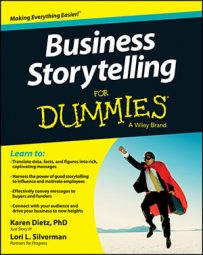The gold standard for leveraging a story for advertising is whether it goes viral through word-of-mouth. That’s everyone’s dream. There’s an art and science to creating a story that will go viral. Today it’s mostly art, but more science is coming forth.
Chip and Dan Heath are best known for their book Made To Stick (Random House, 2007), which focuses on what makes people remember information. Jonah Berger, author of Contagious: How Things Catch On (Simon & Schuster, 2013), goes a step further and addresses those factors that stimulate humans to share information with others. According to Berger, certain emotions increase the likelihood that a story will spread. He learned the following:
On average, positive pieces are shared more than negative ones and high-arousal emotions, whether positive or negative, increase sharing. The first part of this statement may seem like common sense. The surprise is the latter piece.
Even though some negative emotions like anger or anxiety actually increase sharing because they move us to action, sadness doesn’t. When we’re angry, we want to throw a temper tantrum, scream and yell, and jump up and down. We do the same when we’re excited, but in a positive way. Excitement, humor, and awe are all high-arousal positive emotions.
Controversy, or being controversial, doesn’t increase sharing. Berger learned that the more controversial the topic, the less conversation it sparks because the controversy makes us feel uncomfortable. As a result, we don’t talk about the subject and we don’t share information about it.
Here are some other drivers of sharing that Berger found:
Social currency: A piece gets shared when it makes us look great or knowledgeable. We share content when it’s something worth thinking about and because it arouses us, whether it’s true or not. The more practical value we perceive it to have, the more we’ll share it. We do this because we’re trying to help others.
Triggers, public visibility, and stories: If people see someone doing something, they’re more likely to do it themselves. Making something more observable makes it easier to imitate. This is called public visibility.
This begs a question: How can you use stories to make a behavior more visible? Regarding the sharing of stories, make sure the information you want to convey is wrapped up into the story arc so tightly that people can’t share the information without the story.
As Berger asks, “. . . will applying [my findings] make it more likely that 10 people will hear [your message] rather than nine, or that your sales will increase by 20 to 40 percent? Certainly.” This impact is significant.
Reflect on what you want to accomplish by having a story go viral. Then select the medium that best supports that outcome. If you’re a leader sharing a story in your firm that demonstrates a particular value that you prize — such as innovation — you want employees to talk about and share that story.
At the same time, if you want to build trust, authenticity, and deep relationships, then oral storytelling is the best medium. If you’re telling the story to advance a cause, fund a Kickstarter campaign, increase visibility, or get more website hits, then a digital story that could go viral across the Internet might suit your needs better.
The art of storytelling is the crafting. Part of the science of sharing stories is mastering the media continuum — and keeping up with future developments. Even though the guidelines for crafting a compelling story have remained the same for thousands of years, what’s new and different are the multiple media available for sharing a story, which are unprecedented.
Every person, organization, and brand has a story to tell. How we elect to share that story is shaped by the available media. Today, people can access content from TVs, game consoles, computers, tablets, and mobile phones — who knows what else is on the horizon. That means there are more ways than ever to connect with others.
It also means you need to tell your stories across a wide range of platforms using a variety of tools. Find creative ways to share them, personalize them, and have an audience to engage with them in different media. It’s easier now to target by audience, demographic profile, behavior, purchase habits, and many other indicators.

